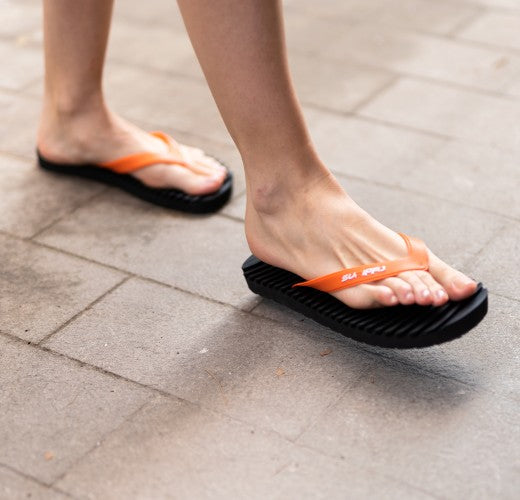We sometimes hear about people with diabetes developing foot problems. What causes this? What's the connection? Approximately half of people with this condition develop diabetic neuropathy, or nerve damage. This nerve damage can spread to any part of the body, but the nerves in the feet and legs are the most affected.
Numbness in feet and legs
Diabetic neuropathy, or damage to nerves and blood vessels, causes numbness and decreased sensation in the feet. Some people experience numbness, tingling, or even pain in the affected area, but many others lose the ability to sense pain, heat, or cold.
How does this inability to feel affect us? Pain is our body's way of letting us know that something is wrong. If we don't feel pain, certain injuries such as cuts, blisters, or sores may go unnoticed. This way, minor problems that might otherwise be unimportant can turn into more serious ones. This is especially true because diabetes also decreases blood flow to areas like the feet, so these injuries heal more slowly and can become infected more easily.
If a person with diabetes has an undetected wound, they could develop a diabetic foot ulcer. This relationship between diabetes and feet makes suffering an injury to this part of the body reason enough to see a specialist. Furthermore, it is also important for people with diabetes to take extreme care of their feet. In the most extreme cases, diabetic foot ulcers can lead to amputations of toes, feet, or legs.
Check our feet daily
When a person develops diabetes, health professionals will inform them how to take care of their health. Not only will they monitor their blood sugar and make dietary changes, but they will also teach them how to check body parts like their feet.
It's important to check the soles of your feet, the sides of them, and your heels and toes daily. We should check for dry or cracked skin, blisters, ulcers, or signs of bruising.
It's also important to note any redness or firm, hard spots. If you can't see clearly, we should ask someone to check our feet frequently.
Foot care for diabetics
We should all take care of our feet daily, but from what we see, in the case of diabetics, it is absolutely essential in their daily routines.
Wash your feet every day
When washing your feet, always use lukewarm water, never hot water. It's also important not to leave your feet submerged for long periods of time. You should also dry them completely, paying particular attention to areas such as your toes, and apply a moisturizer.
Do not walk barefoot
A delicate, insensitive area must always be protected. For this reason, it is recommended that diabetics not go barefoot. It is best to wear shoes or slippers even indoors. Footwear should also be checked to avoid stones or other objects that could damage our feet.
The most comfortable footwear
Always wear comfortable shoes. In winter, it may be easier, as there's a wide range of closed-toe shoes, both casual and more formal. In summer, it's normal to want to wear cooler shoes, but even flip-flops should be high-quality. A good example are Surippa flip-flops , as they feature superior cushioning and a completely ergonomic sole that adapts to our feet.
Cut your nails carefully
Nails should be cut straight across to prevent them from digging into the skin as they grow. It's also important to file down any rough edges. At this point, the best course of action is to see a podiatrist, as they will be the best person to treat the feet of a person with diabetes.
Furthermore, it is not recommended that a person with this condition remove calluses or corns.
Special attention to traffic
Since diabetes also affects blood circulation in this area, we should support it as much as possible. Proper footwear, compression stockings, or elevating your feet when sitting and wiggling your toes for a few minutes throughout the day can be very good advice in these cases.
When to see a doctor
Considering the direct relationship between diabetes and feet, if you experience leg pain, cramps in your buttocks, or tingling or burning in your feet, these are more than enough reasons to inform your family doctor or specialist.
In addition, you should also visit your doctor if you notice a loss of touch or even the ability to feel cold or heat in this area of the body.


